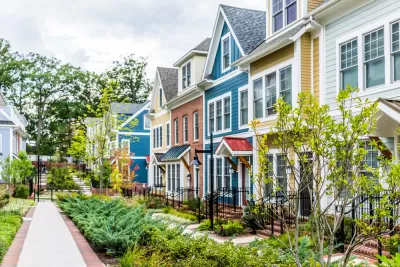After two generations, for reasons large and small, opponents of growth and housing in California are steadily losing power. That's good news for planners and planning.

“NIMBYism has had a good run: a good, multi-million-dollar fun for many millions of (relatively older, whiter, wealthier) Californians. That run is ending.”
“Planners today are less encumbered than ever before by NIMBY-inspired restrictions. From a political perspective, I think they're going to hear increasingly fewer strident voices of opposition at public meetings in the coming years. Those voices might not be any less loud, but they'll be less numerous. In a democracy, numbers are supposed to matter more than volume. Planners can plan according to best practices rather than political constraints.”
“NIMBYs will still win occasional victories, through clever use of CEQA and political pressure in certain slow-growth redoubts, like the San Francisco Peninsula and Orange County. But they’re also going to lose. Their losses will lead to frustration. But frustration is not policy. And the more time passes, the more evidence will mount that the sky remains intact. SB 9 is not going to destroy neighborhoods. Very few cities will adopt SB 10; those that do will not be transformed overnight. NIMBYs will have few arguments and little evidence.”
FULL STORY: Is NIMBYism On The Way Out?

Maui's Vacation Rental Debate Turns Ugly
Verbal attacks, misinformation campaigns and fistfights plague a high-stakes debate to convert thousands of vacation rentals into long-term housing.

Planetizen Federal Action Tracker
A weekly monitor of how Trump’s orders and actions are impacting planners and planning in America.

San Francisco Suspends Traffic Calming Amidst Record Deaths
Citing “a challenging fiscal landscape,” the city will cease the program on the heels of 42 traffic deaths, including 24 pedestrians.

Defunct Pittsburgh Power Plant to Become Residential Tower
A decommissioned steam heat plant will be redeveloped into almost 100 affordable housing units.

Trump Prompts Restructuring of Transportation Research Board in “Unprecedented Overreach”
The TRB has eliminated more than half of its committees including those focused on climate, equity, and cities.

Amtrak Rolls Out New Orleans to Alabama “Mardi Gras” Train
The new service will operate morning and evening departures between Mobile and New Orleans.
Urban Design for Planners 1: Software Tools
This six-course series explores essential urban design concepts using open source software and equips planners with the tools they need to participate fully in the urban design process.
Planning for Universal Design
Learn the tools for implementing Universal Design in planning regulations.
Heyer Gruel & Associates PA
JM Goldson LLC
Custer County Colorado
City of Camden Redevelopment Agency
City of Astoria
Transportation Research & Education Center (TREC) at Portland State University
Jefferson Parish Government
Camden Redevelopment Agency
City of Claremont


























